Exploring the World of Tiny Home Plans
Dive into the fascinating realm of tiny home plans, where innovative design meets minimalist living. As you explore this world, you'll discover a vibrant array of tiny home designs that cater to every lifestyle. Whether you're drawn to the simplicity of tiny house interior designs or seeking the best tiny house kits to streamline your vision, the possibilities are endless. With a focus on affordable tiny homes, these plans pave the way for an economical yet fulfilling living experience. Picture yourself crafting a cozy abode using detailed tiny home blueprints or exploring tiny house on wheels plans for ultimate mobility. Understanding how to build a tiny house involves blending creativity with practical insights from tiny home construction plans, which highlight sustainable and efficient methods. Embrace this journey to transform tiny house design ideas into a tangible reality, crafting a space that's uniquely yours while addressing both aesthetic desires and functional needs within a compact footprint.
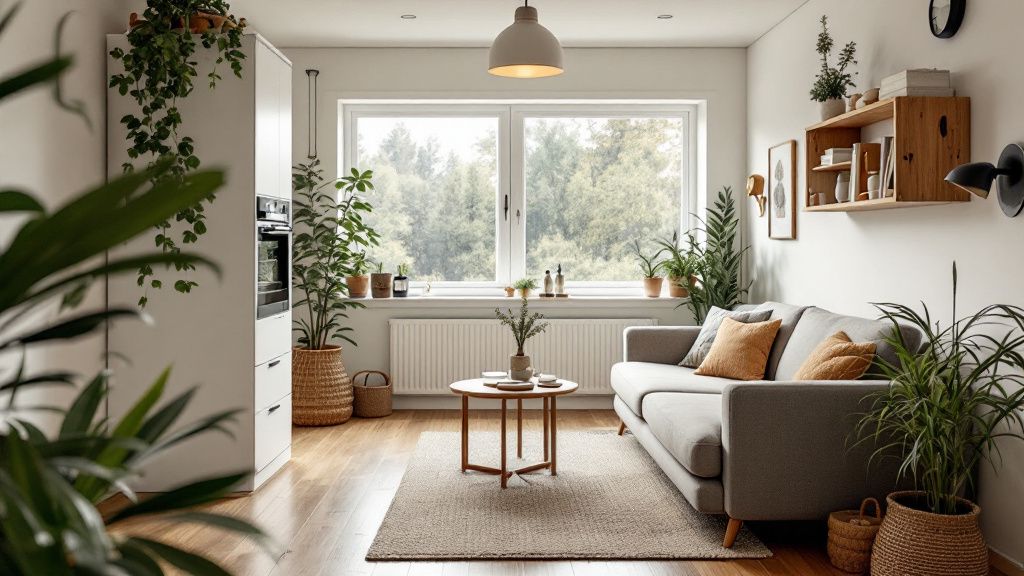
Understanding the Concept of Tiny Living
Tiny living extends beyond compact home arrangements; it's a transformative lifestyle emphasizing simplicity and sustainability. Embracing tiny house living involves adopting an efficient use of space, where each corner and nook serves a purpose. This lifestyle encourages you to focus on what truly matters, shedding excess belongings and prioritizing experiences over possessions. Tiny home construction plans play a crucial role in facilitating this streamlined way of living.
Looking at tiny house design ideas through the lens of innovative solutions, you can see that creative layouts make the most of small spaces without compromising comfort. Clever storage options and multifunctional furniture become essential components, allowing you to craft a welcoming environment. Affordable tiny homes often leverage these inventive approaches, making it easier for more people to access the joys of a minimalistic lifestyle.
With tiny home blueprints at your disposal, you're empowered to bring your vision to life. Exploring tiny house on wheels plans introduces flexibility, offering the opportunity to embrace nomadic living without sacrificing the amenities of a conventional home. Each design aspect is thoughtfully planned to maximize space and functionality while maintaining a cozy, inviting atmosphere.
Understanding how to build a tiny house involves more than construction techniques; it's a holistic approach to living that prioritizes sustainability and intentionality. From selecting the best tiny house kits to customizing interiors, these choices contribute to a harmonious living experience, reflecting your personal style and values in a neatly packaged home.
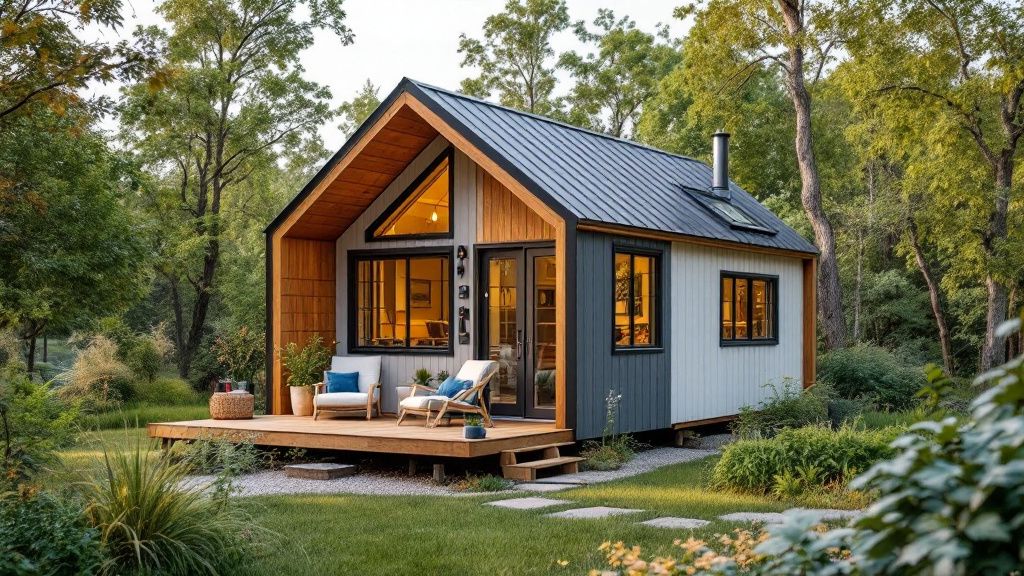
Types of Tiny Home Plans Available
What makes tiny home plans so appealing to diverse lifestyles and preferences? Exploring the variety of tiny house designs reveals a rich spectrum of options catering to different needs. From modern minimalist layouts to rustic retreats, these plans offer something for everyone. Whether you’re drawn to sleek, urban designs or charming, country-style retreats, tiny home designs can be tailored to your aesthetic tastes and functional requirements.
Tiny house on wheels plans represent a popular choice for those seeking mobility and freedom. These designs allow you to take your home wherever you go, without sacrificing comfort or amenities. By utilizing efficient layouts and clever compartmentalization, these homes make it easy to enjoy the benefits of tiny house living, whether you're exploring new places or settling in one location.
For those interested in permanent tiny homes, engaging with tiny house interior designs can help maximize the use of every square foot. Open floor plans with multipurpose areas and innovative storage solutions ensure that your living space is both stylish and practical. Sustainable materials and energy-efficient systems are common features, making affordable tiny homes accessible to a broader audience while promoting environmental consciousness.
How do best tiny house kits influence the accessibility of constructing your dream home? These kits simplify the building process, providing all the necessary components and instructions to assemble a tiny home. They cater to varying levels of expertise, whether you're a seasoned builder or a DIY enthusiast just learning how to build a tiny house. By offering a structured approach, these kits reduce the complexity often associated with homebuilding.
Lastly, tiny home blueprints serve as a foundational tool in bringing your vision to life. These detailed plans guide you through the construction process by outlining dimensions, materials, and technical specifications. With a comprehensive set of blueprints, you can customize your tiny home’s design, ensuring it meets your unique needs and transforms your living space into a personal haven.
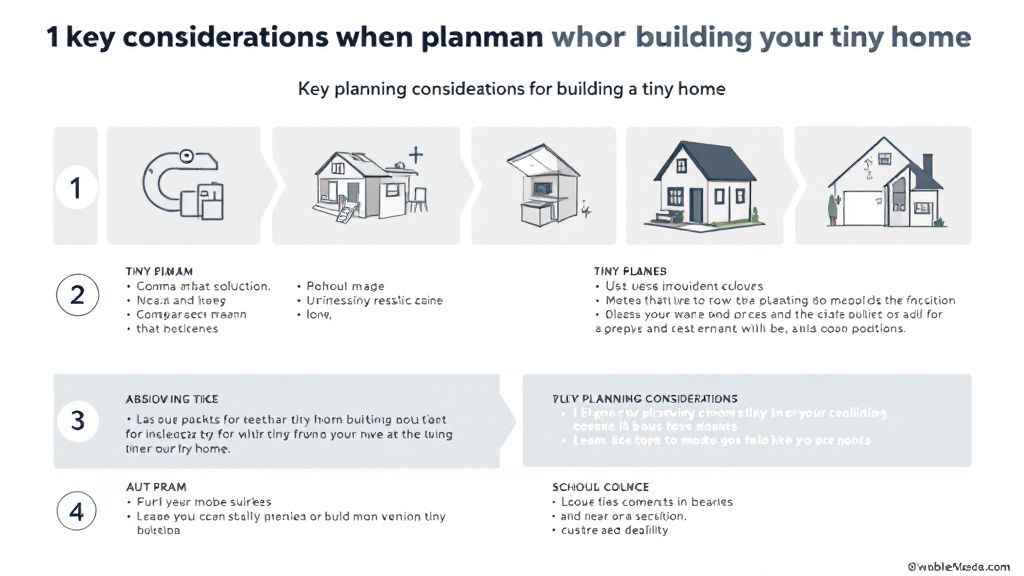
Key Considerations When Planning Your Tiny Home
When planning your tiny home, one important consideration is the layout and use of space. Determining how to utilize every square foot efficiently can significantly impact your daily life. From compact kitchens with foldable tables to lofted sleeping areas, the possibilities for tiny house designs are vast. Planning ahead ensures that your home remains both functional and comfortable, adapting seamlessly to your lifestyle.
Considering the location of your tiny home is crucial as well, as it influences your construction approach and legal requirements. For example, tiny house on wheels plans often appeal to those who value mobility, enabling easy relocation without removing your home from the property. This offers flexibility and allows you to explore different environments while maintaining your base of operations.
Budgeting is another critical factor in the planning process, as it shapes your choices in materials and design. Affordable tiny homes can be achieved by choosing cost-effective yet durable materials and simplifying interior designs. Opting for the best tiny house kits or sourcing reclaimed materials can help lower costs without sacrificing quality, making it easier to stick to your financial plan.
Customizing your tiny home interior designs to reflect personal tastes also plays a vital role in making the space your own. By integrating your unique style with functional design elements, you create a harmonious living environment that feels just right. Whether it’s selecting energy-efficient appliances or incorporating natural light, each choice enhances the home’s livability.
Evaluating tiny home blueprints provides a blueprint to your dream tiny home by offering detailed guidance on construction plans and technical specifications. These blueprints assist in decision-making and ensure that every aspect of your tiny home aligns with your vision. By understanding how to build a tiny house from these plans, you lay a solid foundation for embarking on a journey into tiny house living.

Choosing the Right Materials for Your Tiny Home
Selecting the right materials is fundamental to crafting a tiny home that balances durability with aesthetics. When choosing materials, consider factors such as climate-resilience, structural integrity, and eco-friendliness. Opting for sustainable resources like bamboo or reclaimed wood adds charm to your tiny home designs while minimizing environmental impact. Robust materials ensure that your home withstands the elements and supports a comfortable lifestyle in different settings.
Exploring efficient options for insulation and roofing can enhance energy efficiency and comfort. Insulating materials such as sheep’s wool or spray foam keep your tiny house interior designs cozy during winter and cool in the summer. Similarly, metal or green roofs offer longevity and can mitigate temperature fluctuations, contributing to reduced energy consumption. These choices play a significant role in maintaining a sustainable and cost-effective tiny house living experience.
Looking ahead, material innovation in tiny home construction plans is expected to evolve in remarkable ways. Advancements in recycled and smart materials promise increased efficiency and customization. As these technologies improve, you’ll likely find an expanding array of options that cater to both style and sustainability. This progress not only enriches tiny home aesthetics but also enhances the practical aspects of how to build a tiny house that meets future needs.
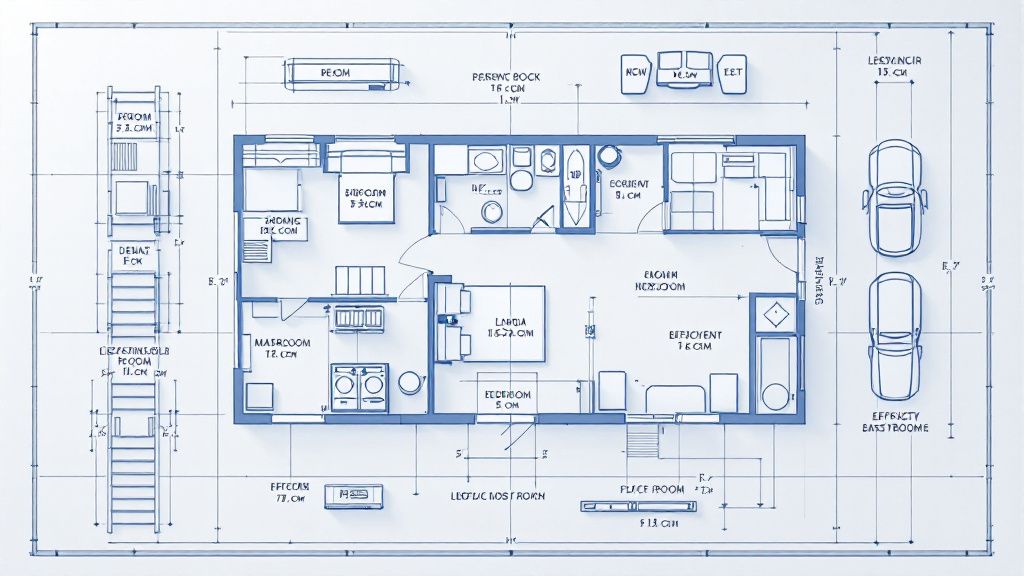
Designing an Efficient Tiny Home Layout
Designing an efficient tiny home layout requires meticulous attention to how space is used. Imagine your tiny home as a flowing river; just like water finds its path effortlessly, your tiny home designs should allow movement without obstruction. This fluidity is achieved through open floor plans that unify the living area, kitchen, and sleeping quarters, enabling you to transition seamlessly from one functional space to another.
Key to this efficiency is the clever integration of multifunctional furniture, which maximizes the utility of limited space. Consider a dining table that transforms into a work desk or a sofa that unveils hidden storage. These elements not only enhance practicality but also maintain the aesthetics of your tiny house interior designs, making everyday living both convenient and visually appealing.
Effective use of vertical space is another vital aspect when planning your layout. In the same way a tall bookshelf utilizes unused wall areas, wall-mounted shelves and lofted sleeping areas expand your living space upwards rather than outwards. This approach allows you to maintain an uncluttered floor area, preserving the sense of openness essential to a comfortable tiny house on wheels plans or any fixed tiny home structure.
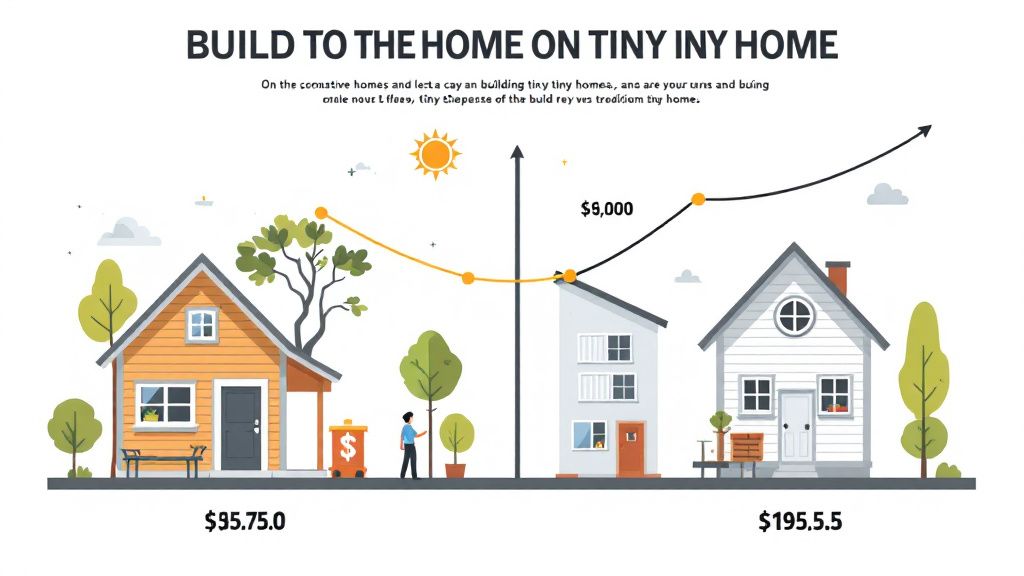
Cost Analysis for Building Tiny Homes
When considering a cost analysis for building tiny homes, understanding the various components can guide your budget decisions. Initial expenses often include materials, labor, and essential services. Breaking these costs down helps in making informed choices about your tiny home construction plans. Materials like reclaimed wood or metal siding can affect the overall expense, while labor costs vary depending on whether you opt for professional builders or adopt a DIY approach.
Did you know? According to industry reports, roughly 68% of tiny house owners own their homes outright compared to just 29% of traditional homeowners. This statistic illustrates the affordability aspect of tiny house living, as reduced square footage translates to lower costs. The significant savings on mortgage payments represent why many choose affordable tiny homes as a viable housing solution.
When evaluating the best tiny house kits, these can offer a predetermined budget advantage by bundling the materials into a package that includes construction manuals and tiny home blueprints. This approach often results in cost efficiency, as it avoids unexpected expenses that may arise during the building process. Kits vary in price depending on design complexity and size, providing solutions for diverse budgets.
Beyond initial construction costs, consider the long-term financial benefits of tiny house interior designs focusing on energy efficiency. Implementing systems like solar panels or energy-efficient appliances can reduce utility bills. Whether choosing a stationary or a tiny house on wheels plan, the ability to limit ongoing expenses makes tiny home living an attractive financial proposition over time.
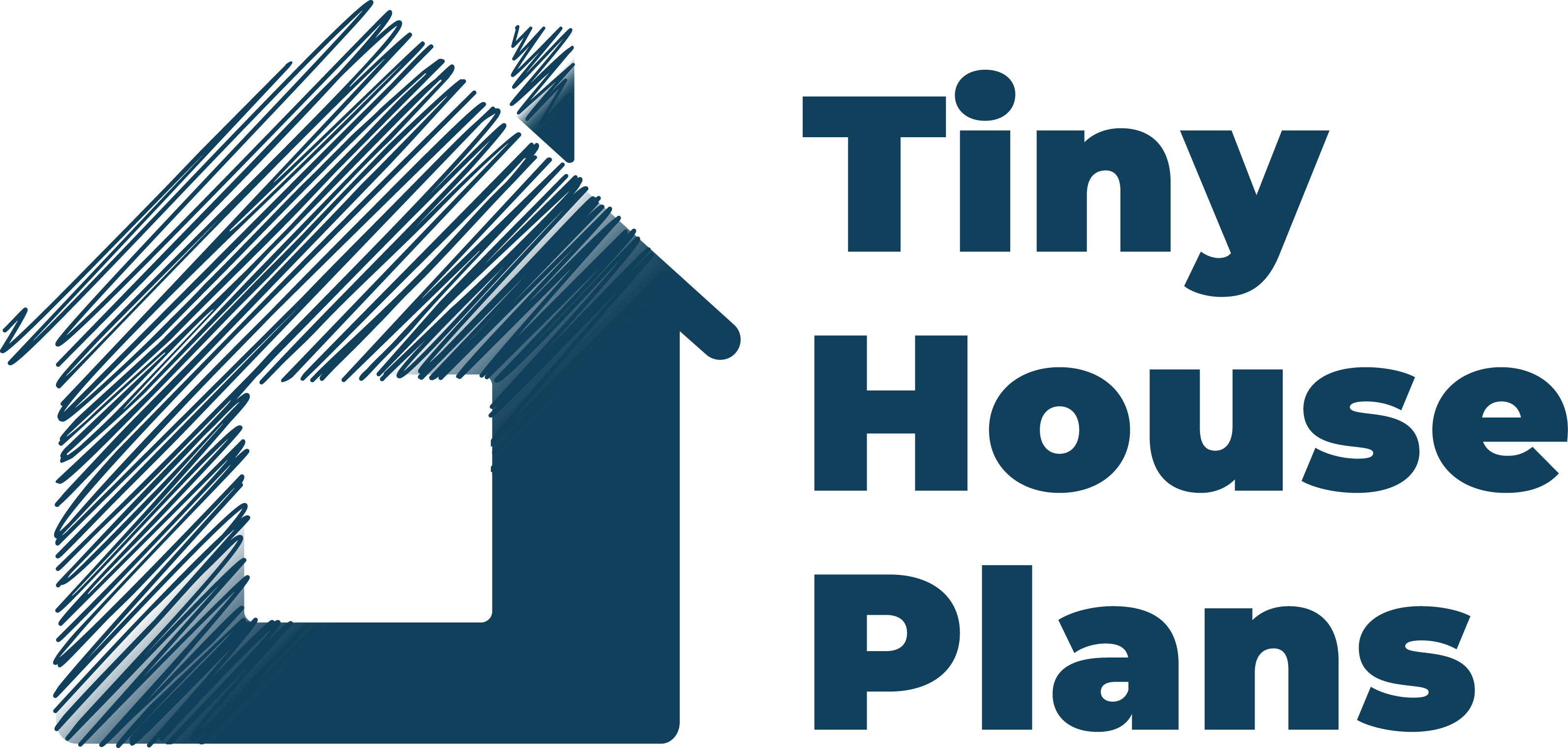




Share: